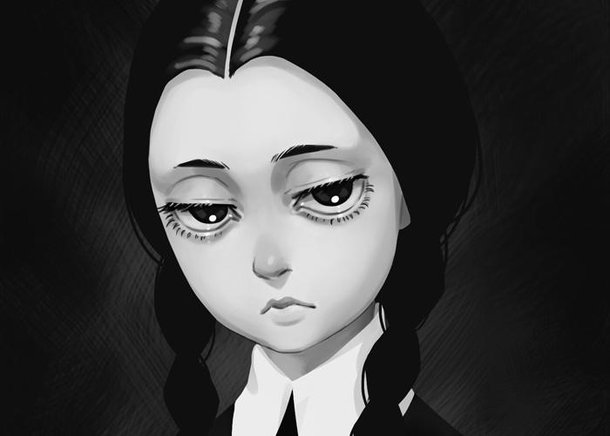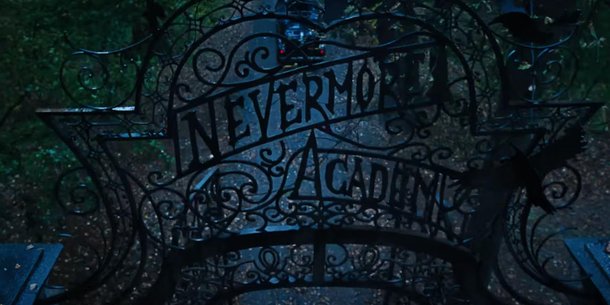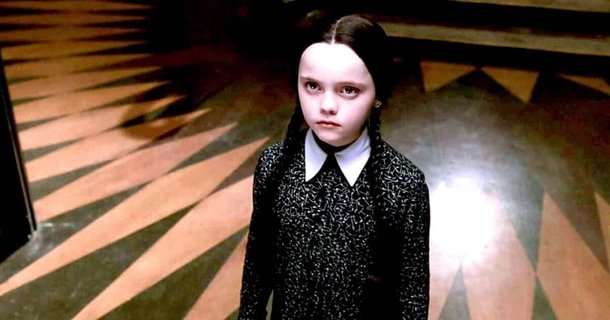A série Wandinha, da Netflix, traz os holofotes para a filha meio apática da amada Família Addams, adaptação televisiva do cartoon criado por Charles Addams para a revista The New Yorker.
Mesmo com seu ar meio blasé, todos adoram a filha do meio do casal Morticia e Gomez Addams. Neste texto, contamos 7 curiosidades sobre ela que você provavelmente não sabe.
1. Ela apareceu pela primeira vez em 1940

Charles Addams apresentou Wandinha ao mundo pela primeira vez em um cartoon publicado na The New Yorker em 29 de junho de 1940. O desenho mostrava um casal diante de uma menina órfã magricela pulando corda à noite, no meio da rua.
Mesmo que ela tivesse traços em comum com Mortícia, curiosamente, ela seria exibida como filha dos Addams apenas em 1944, quando apareceria em um cartoon ao lado de seu irmão Feioso. Não por acaso, eles estão brigando nesta tirinha.
2. A “Criança da Quarta-Feira”
 (Fonte: The Artifice)
(Fonte: The Artifice)
No desenho original, o nome de Wandinha é Wednesday — que, traduzindo, significa “quarta-feira”. Mas por que será que os Addams teriam batizado sua filha com um nome da semana?
A resposta está numa cantiga infantil chamada Monday’s Child, cujos versos dizem, em tradução livre para o português, assim: “a criança da segunda-feira é bonita/ a criança da terça-feira é cheia de graça/ a criança da quarta-feira está cheia de aflição”. Charles Addams provavelmente achou que esse seria um ótimo nome para a sua criação.
3. Sua boneca favorita não tem cabeça
 (Fonte: Pinterest)
(Fonte: Pinterest)
Outro elemento que Charles Addams imaginou para Wandinha era o seu brinquedo favorito: uma boneca sem cabeça que vestia a mesma roupa que ela. A boneca, originalmente, tinha cabeça, mas ela a perdeu quando Wandinha e seu irmãozinho Feioso brincaram com a coitada usando uma guilhotina.
4. Ela frequenta uma escola muito estranha
 (Fonte: Gamerant)
(Fonte: Gamerant)
Wandinha frequenta as aulas em uma escola especial, chamada Nevermore Academy. Trata-se de uma instituição que atende famílias que mantêm os mesmos valores sombrios dos Addams.
O nome da escola faz referência ao poema The Raven, de Edgar Allan Poe, em que um corvo aparece para um homem repetindo “nunca mais” (nevermore). O autor, vale lembrar, é sempre associado aos góticos.
5. A Wandinha dos filmes faz uma ponta na série
 (Fonte: Omelete)
(Fonte: Omelete)
A série Wandinha, da Netflix, traz o retorno do diretor Tim Burton para o universo peculiar da família Addams. Foi ele que dirigiu os icônicos filmes de 1991 e 1994.
E há uma curiosidade na nova série: a professora Marylin Thornhill é vivida por Christina Ricci, a atriz que interpretou Wandinha nos dois filmes e é provavelmente o rosto mais conhecido associado à personagem. Christina, que tem 42 anos, tinha 11 e 14 na época dos longas.
6. A inspiração em Billie Eilish
 (Fonte: Twitter)
(Fonte: Twitter)
Na nova série, Wandinha é vivida pela atriz americana Jenna Ortega, de 20 anos. Os looks da personagem chamam a atenção e fazem uma releitura de sua roupa mais clássica: o vestido preto com gola branca pontuda.
Os figurinos da nova produção foram criados por Colleen Atwood, que já venceu o Oscar quatro vezes pelo seu trabalho. Ela afirmou que as roupas imaginadas para Wandinha foram inspiradas no streetwear vestido por Billie Eilish, uma das novas estrelas do mundo da música.
7. Ela tem poderes sobrenaturais
 (Fonte: Darkside)
(Fonte: Darkside)
No filme A Família Addams 2, de 1994, Wandinha demonstra que tem poderes sobrenaturais. Ela está num acampamento de férias e tem pesadelos que mostram que ela tem capacidades de adivinhação. Estas habilidades já haviam sido exibidas num especial para televisão filmado em 1977.
Fonte: MegaCurioso.